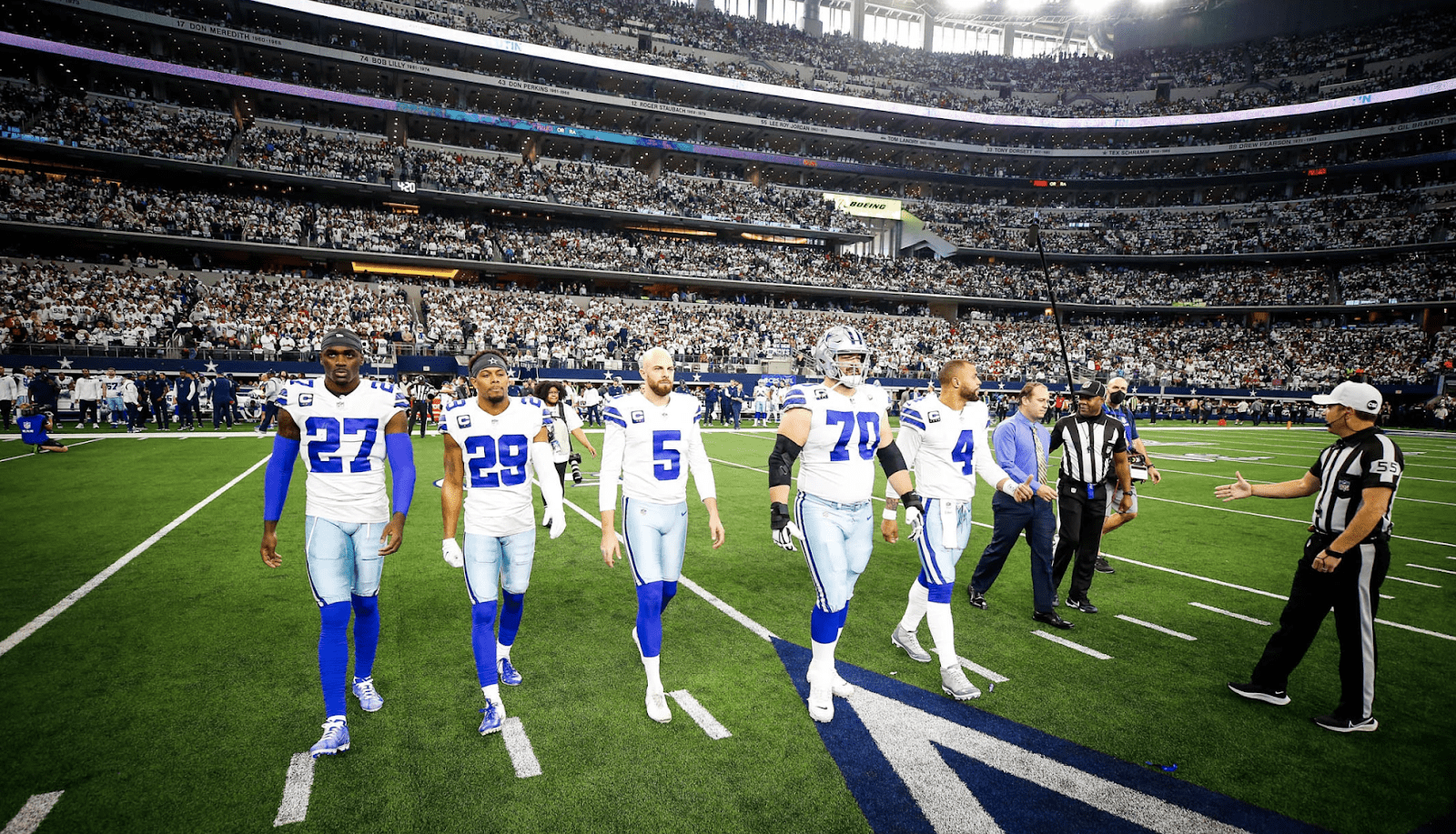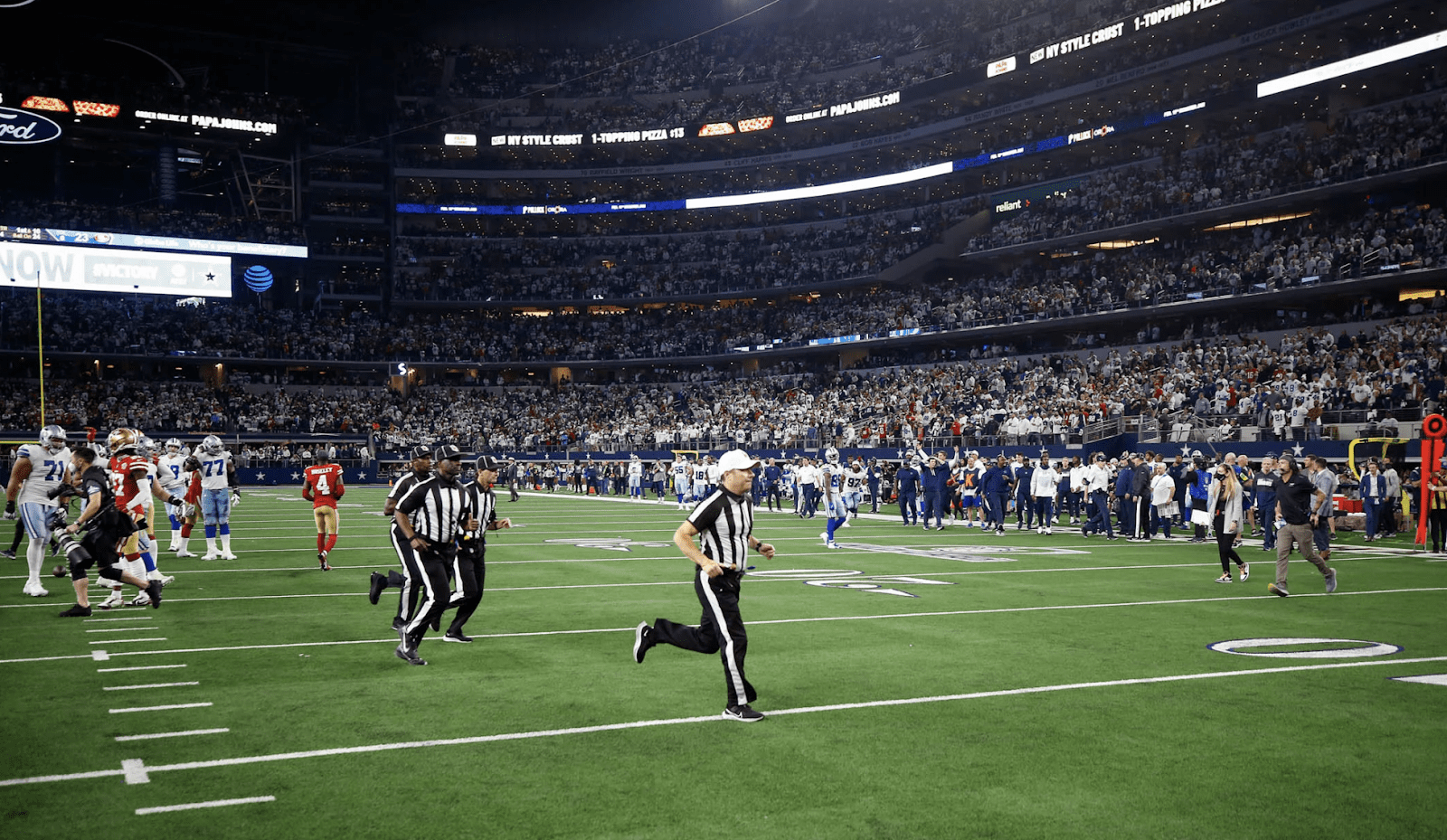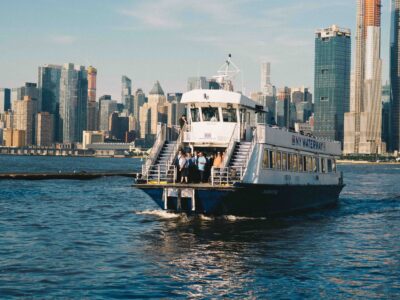The old expression “everything’s bigger in Texas” certainly rings true when talking about AT&T Stadium, home to the Dallas Cowboys. It stands as the world’s biggest dome stadium and holds one of the biggest HD videoboards ever made, while the retractable glass windows at each end of the building are the biggest of their kind.
AT&T Stadium (initially Cowboys Stadium) was not built just to be big in size but also to be big on sustainability. “We are committed to maximizing the impact of the world’s most recognizable sports franchise and use those forces as a powerful means to enhance our local communities and the world around us,” declared Cowboys owner Jerry Jones. The practical purpose behind the huge retractable glass, for example, is to allow for natural ventilation. Similarly, the roof is retractable and reflective! It also assists in lowering lighting, heating, and cooling usage.

The Cowboys demonstrated concern for the environment from the start of this stadium project. Paper, steel, concrete, and other construction waste were recycled. The parking lots were made with “permeable pavement” to facilitate stormwater runoff. Care was taken to keep surrounding creeks buffered from the stadium grounds and salvage trees.
Conservation of water, energy, and solid waste have been ongoing focal points on the stadium’s sustainability agenda. Low-flow plumbing fixtures and energy-efficient systems were part of the stadium’s original construction, and a permanent recycling program has long been in place. AT&T Stadium’s 18 custom-built escalators feature variable frequency drives, which are highly energy-efficient and can also send energy back into the stadium’s power grid.
The stadium’s lighting was updated in 2015, and the new, state-of-the-art LED system decreased energy consumption by 76% and improved lighting levels, especially for HD TV broadcasts. AT&T Stadium later underwent a comprehensive overhaul to enhance energy conservation. Improvements included a retro-commission of the building’s systems, HVAC upgrades, and the addition of magnetic bearing chillers. These changes helped lower utility costs by 20%, saving the stadium around $1 million each year.
The Cowboys were the first American sports team to install an Orca Green Machine. This innovative bio-composting reactor uses non-hazardous microorganisms and biochips to convert food waste into nutrient-rich greywater, safely discharged into the wastewater system.
Each year, approximately 85,000 pounds of food waste gets diverted from landfills, resulting in a reduction in methane gas production as well as garbage disposal expenses and energy and water usage. The stadium’s hi-tech approach to tackling food waste includes tracking fans’ buying habits and other variables, such as game times, weather, and even who the Cowboys’ opponent is.
The Green Sports Alliance declared that “AT&T Stadium’s sustainable food priorities set it apart from other professional sports venues working toward environmental stewardship.” The stadium, for instance, annually sources thousands of pounds of organic produce through its long-running arrangement with the WE Over Me Farm at Dallas’ Paul Quinn College. Fans can find vegetarian, vegan, and gluten-free items at various concession stands, and at least a handful of concession carts concentrate solely on certified USDA organic and healthier items. Furthermore, the stadium purchases much of its meat, eggs, and dairy items from Texas-based suppliers. “We want top-notch products coming through this building, so we are really focusing on local, organic, sustainable,” asserted George Wasai of Legends Hospitality, the stadium’s food, and beverage provider.

At three million square feet, AT&T Stadium certainly is a big venue, so it’s no surprise then that many big sporting events have been played there. Each year it is home to the major NCAA football bowl game, the Cotton Bowl, and was the site of the first-ever College Football National Championship Game in 2015. AT&T Stadium has hosted the 2010 NBA All-Star Game, the 2011 Super Bowl, and the 2014 NCAA Final Four men’s basketball tournament. The latter two events in particular, positively impacted AT&T Stadium’s sustainability efforts. During the Final Four, the stadium teamed up with the city of Dallas and the non-profit “Rock and Wrap It Up” to donate nearly 3,000 pounds of leftover food instead of sending it to landfills. The stadium continues to donate food after every game to local charities.
When the Super Bowl came to Dallas, over 50 community outreach and charity-related events were held. Among them was a program that collected previously used mobile phones and accessories to give to victims of domestic violence. Additionally, renewable energy credits were used to “power” not only AT&T Stadium but other Super Bowl-affiliated venues. At the same time, 6,000 trees were planted around North Texas as part of the campaign to cut down on carbon emissions.
The Dallas Cowboys may be known as “America’s Team,” but the sustainability programs at AT&T Stadium serve to bring ecological change across the globe.





